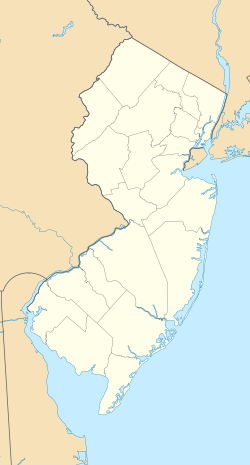Fitzrandolph Gate | |
 FitzRandolph Gate with Nassau Hall behind | |
| Location | 91 Nassau St., Princeton, NJ |
|---|---|
| Coordinates | 40°20′58.6″N74°39′35.0″W / 40.349611°N 74.659722°W |
| Built | 1905 |
| Architect | McKim, Mead & White |
| Architectural style | Georgian ironwork |
| Part of | Princeton Historic District (ID75001143) |
| Designated CP | 27 June 1975 |
FitzRandolph Gate is a wrought-iron structure that serves as the official entrance of Princeton University, standing in front of Nassau Hall on Nassau Street in Princeton, New Jersey. The gate was funded by a bequest of Augustus Van Wickle in honor of his great-grandfather, Nathaniel FitzRandolph, who had donated to the university the land on which Nassau Hall sits. The gate was completed in 1905 and was designed by McKim, Mead & White. The gate remained closed and locked apart from graduation and the P-rade until 1970, when that graduating class ensured that it would always remain open, "in a symbol of the University's openness to the local and worldwide community."[ citation needed ]
Contents
At commencement each year the graduating seniors process out of the gates to mark the completion of their time at Princeton. A widespread legend exists on campus that students who walk out of the gates before graduation will not finish their degree. [1] In 2004 a tradition was added at Princeton's opening exercises called the Pre-Rade where the matriculating freshmen march into the gates behind the banners of their residential colleges to mark their entrance into Princeton. [2]







